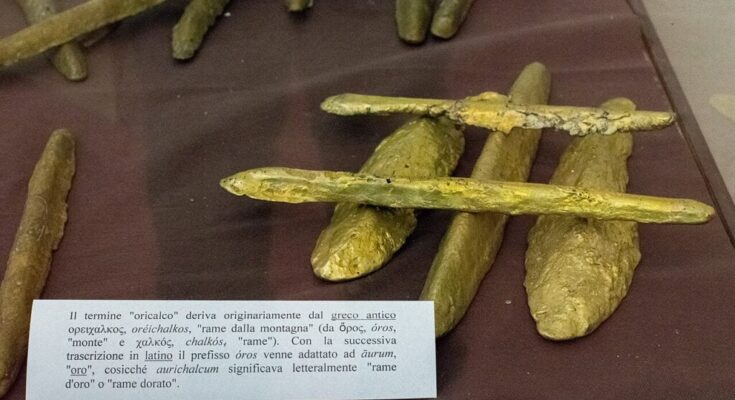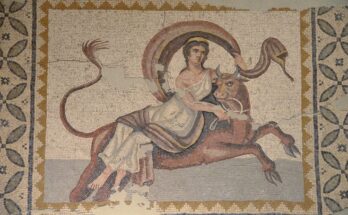
A fifth-century Greek shipwreck that contains orichalcum, thought to be the second most precious metal on Earth after gold, is to be recovered from the seabed off Sicily.
The wreck, named Gela II, is where in 2015 and 2017, rare orichalcum metal, said to be from the legendary Atlantis, was recovered. Due to this, details of the shipwreck have been keen sought by both Atlantis enthusiasts and the archaeological world.
Orichalcum was a metal used in coins during ancient times. It is a golden-yellow colored mixture consisting of both copper and zinc and referred to as brass, and has even been mentioned in ancient times by the likes of Plato.
In Plato’s story on the Atlantis, Critias (460–403 BC) says that orichalcum had been considered second only to gold in value and had been found and mined in many parts of Atlantis in ancient times, but that by Critias’ own time, orichalcum was known only by name.
Orichalcum may have been a noble metal such as platinum, as it was supposed to be mined, but has been identified as pure copper or certain alloys of bronze, and especially brass alloys in the case of antique Roman coins, the latter being of “similar appearance to modern brass,” according to scientific research.
The name is derived from the Greek “oreikhalkos” (Greek: ὀρείχαλκος, in other words, ὄρος, oros, or mountain and χαλκός, chalkos, or copper), literally meaning “mountain copper.”
Ancient Greek wreck discovered in 1980 off Sicily
The ancient wreck was discovered by divers in 1980 near the port of Gela, Sicily. The ship and its cargo were remarkably well-preserved, likely due to the specific conditions of the seabed where it sank. This has allowed archaeologists to gain unprecedented insights into ancient Greek maritime practices and technology.
The cargo included a wide range of valuable artifacts, such as amphorae (jars used for storing wine and other liquids), pottery, metal objects, and possibly even personal belongings. These items offer clues about the trade routes, economy, and daily life of the ancient Greeks.
Previous discoveries in the area include Corinthian helmets and orichalcum ingots, now displayed at the Archaeological Museum of Gela. A total of 39 ingots (metal cast into rectangular blocks) were found close to a shipwreck in 2015. In 2017, 47 more ingots discovered, for a total of 86 metal pieces found to date.
The recovery of the vessel is expected to take around 270 days to complete and is set to cost the companies involved around €500,000. Despite the cost, the remains of Gela II are said to be invaluable.
Another vessel, Gela I, was recovered in the same area beforehand, meaning Gela II will double the breakthrough of cultural and tourist heritage. The first conservation of Gela II will take place at a museum in Bosco Littorio which had Gela I last year.



